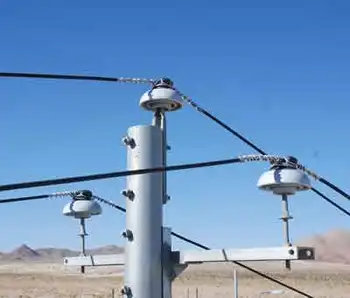Putting some wind beneath our energy wings
By Vancouver Sun
NFPA 70b Training - Electrical Maintenance
Our customized live online or in‑person group training can be delivered to your staff at your location.

- Live Online
- 12 hours Instructor-led
- Group Training Available
T. Boone Pickens, the Texas oilman who claims he's drilled more dry holes and found more oil than just about anyone in the industry, is turning the page, to a degree, on the black gold that made him a billionaire.
He is intensely concerned about the U.S.'s dependence on foreign oil, about 70 per cent of which it imports.
His plan to reduce that dependence? Invest in wind power.
He's already invested in the technology in the United States and is spending millions on an advertising campaign to tell his compatriots that wind is the way to go – to the point where he thinks it can represent 20 per cent of the U.S. electricity supply by 2030. He likes it because it is clean, green and renewable.
It produces no greenhouse-gas emissions that contribute to harmful climate change.
Pickens's actions represent one more important validation of wind-generated power.
British Columbia faces the same climate-change challenges as do Pickens and his countrymen. And, like Pickens, the B.C. public has a strong desire to lessen its fossil-fuel use and add more green, renewable sources to our energy mix.
While we are fortunate not to be as oil-dependent as the U.S., we in B.C. use more electricity than we generate, despite an abundance of hydroelectric power. To meet demand, we import as much as 15 per cent of our electricity needs, which are supplied by the often carbon-intensive power from other jurisdictions.
This is in contrast to the B.C. Energy Plan goal of being self-sufficient.
Pickens, who, to date has invested in U.S. land-based wind farm projects, might be interested to know that B.C. is blessed with the very resource he endorses – literally in our own back yard. But there's a difference. B.C. is home to what is planned to be the first offshore wind farm in Canada.
On the northeast coast of Haida Gwaii (Queen Charlotte Islands) is the Hecate Strait where NaiKun Wind Group of Vancouver is proposing a project whose first phase would produce enough electricity to light up 120,000 homes.
It would also displace 26,000 tonnes of greenhouse gases per year on Haida Gwaii currently emitted as a result of high-cost, diesel generation on which this pristine set of islands ironically depends for most of its electricity needs.
NaiKun's project will consist of between 64 and 107 wind turbine towers with an undersea cable to transport the power back to the mainland near Prince Rupert.
Wind energy, as Pickens notes, is 100 per cent renewable and clean. And offshore wind is arguably stronger and more consistent than wind over land. It generates more energy, more efficiently. Plus, it complements hydroelectric power.
In the winter, when BC Hydro's reservoirs are the lowest (while demand for electricity is greatest), wind supply is high. That suits B.C. well. As for Hecate Strait, it is an ideal location for this project, with strong winds, a sandy seabed, shallow waters and proximity to the main provincial energy grid.
If Pickens can explore new approaches to energy, so can British Columbians. If Pickens can declare a goal of having wind power represent 20 per cent of the U.S. energy mix within several decades, B.C. – and Canada – can set the bar high, too.
The Canadian Wind Energy Association has set a rather modest goal of 10,000 MW of installed wind energy in Canada by 2010, enough to supply five per cent of Canada's electricity needs.
Wind power's time has come – offshore wind power in particular. Europeans have embraced wind power and so has the United States. Wind power is a viable, accepted and necessary part of our future energy supply. By using this proven technology, B.C. can be a leader in putting offshore wind at the forefront of our green energy mix.











